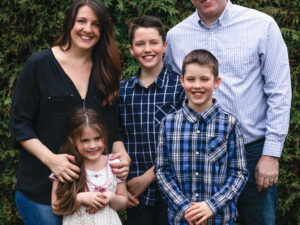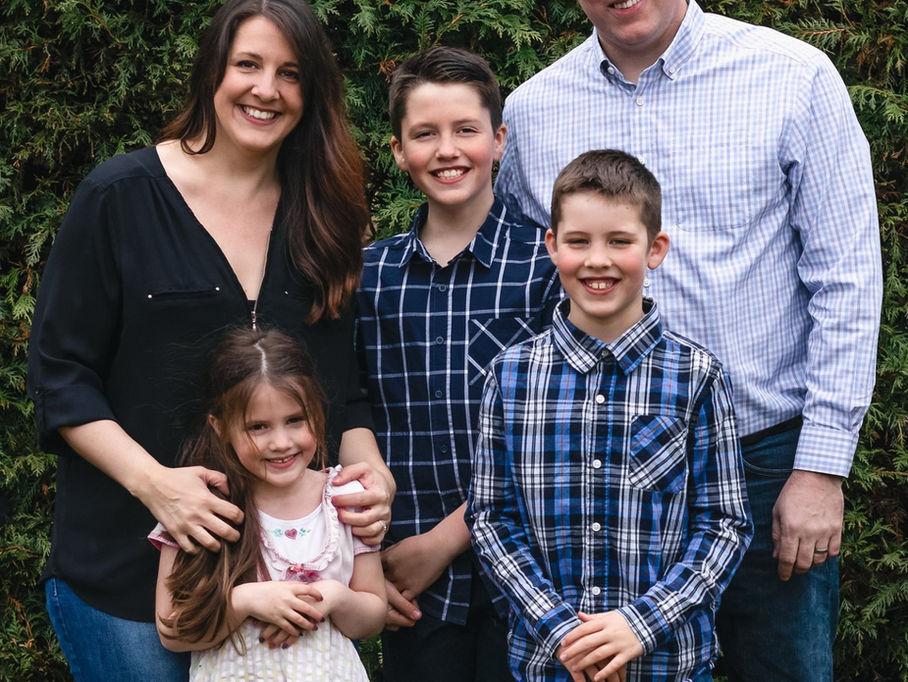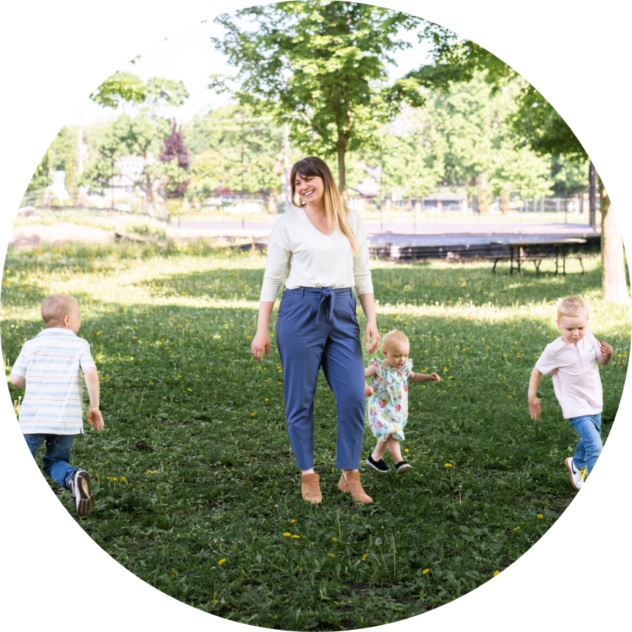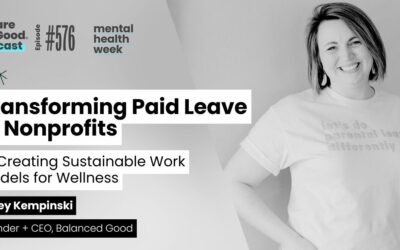I met Amanda Rocheleau at AFP Toronto Congress this past November, and I don’t think she realized how much our brief passing impacted me. Everything she spoke about in her panel discussion resonated with me. I truly believe she has a clear and important message that all fundraisers need to hear: compassion fatigue exists and we need to manage it.
Amanda is a registered social worker, compassion fatigue expert, Mom of 3 (!), wife, school volunteer, and entrepreneur. She also travels for speaker engagements and finds time to knit and read, and her family just got a new kitten (I’m impressed!). Oh, and to top it all off her husband is a recovering fundraiser, so she truly has a unique perspective on the challenges in our sector, both in the administrative roles and in the front-line service delivery roles. In her private practice she has also worked with fundraisers, executive directors, and caregivers in the social profit sector.
When you read this article, I hope one theme resonates with you, and that’s the theme of self care. When I spoke with Amanda, she was clear on this message, we (as working parents, caregivers, and professionals) NEED to make time for self care, time for just BEING (not doing). But honestly, how do we find time for all of this? Amanda reiterated that idea of leaning into our networks, asking for help and offering help, and letting go of the things that don’t really matter. To me, she really speaks to the whole notion that “it takes a village”.
Without further ado, let’s jump into this conversation!
 1. Briefly tell me about a day in the life of Amanda Rocheleau, Registered Social Worker and Compassion Fatigue Specialist:
1. Briefly tell me about a day in the life of Amanda Rocheleau, Registered Social Worker and Compassion Fatigue Specialist:
My weekdays begin with a morning routine of making lunches and getting the kids on the bus. It’s a pretty steady pace for the first 45 minutes or so, and then once they are off to school, I begin my own morning routine. I make a coffee, do my stretches and eat breakfast with my husband. After that, it varies. Sometimes, I work from home, or I head into the office for individual sessions with clients or sometimes I am providing training. Unless I am out of town for an event, I am home every night for supper with the family, homework with the kids, and cuddles with the cats.
2. We met at AFP Congress, and when you spoke at the True Grit Panel, I loved everything you were saying. In fact, listening to you was one of the first times I’ve heard the phrase “compassion fatigue”. Can you explain this a little bit further and perhaps indicate why it is especially relevant in the social profit sector?
I remember the first time I heard the term compassion fatigue (CF) many years ago as well. I thought it was interesting that it was a concept I was so familiar with; yet did not have a name for it. In order to understand what CF is we need to understand what compassion is first. Compassion is recognizing suffering around you (in others, in animals, or even the suffering of the planet), having an emotional response like empathy which then motivates us to want to relieve some of that suffering. So, compassion is our empathy in action.
Thus, compassion fatigue is the gradual erosion of the desire to relieve the suffering of others. We may continue to see it and we may even empathize, but we no longer feel the same kind of energy to respond compassionately as we once did before. CF impacts the social profit sector because in order to achieve the goals of social change and raising money to fund further social change, we need people to want to respond compassionately – recognise the need, empathise with it, and then take action to contribute to that cause. Compassion fuels change and community mobilization. But when CF is present, we get a lot of “Look, I get that people are suffering but I just can’t do anything about it” type responses.
3. You had shared a little bit about your journey to get to where you are today, including your struggle with trying to be “SuperWoman/SuperMom”. Do you believe there is a true work-life balance or blend, and do you think finding this is possible?
Oh ya, the struggle is real! People often ask me what my first step was on my journey towards wellness, and I always tell them that I had to accept my humanity. Somewhere along my life-journey I had adopted this idea that I needed to be “super” and hold it all together while I helped those in need. I was their rock, and they depended on me to stay strong. I mean, who was I to complain about anything when I am so painfully aware of the suffering in others? I wore an “I’m-fine” mask for a long time until it became too much to bear.
I couldn’t fake it anymore.
I had to first admit to myself, and then to others, that I was not fine. I was actually flawed, limited and vulnerable just like everyone else! I started to explore what it meant to have self-compassion and realized I was lacking it! I started to really look at how I treated myself and I realized I didn’t follow the advice I gave to others. After a real attitude change, I just started to pay attention to my own needs and desires and take small steps towards my own wellness. If I was tired, I rested instead of pushing on. If I wanted to say no, I would gently decline instead of resentfully saying yes. If my shift was over, I would leave the rest of the work for another time or person instead of trying to do it all. If my children wanted something the second I sat down, I would tell them to wait a few minutes while I rested instead of jumping up that very second. It was all small decisions that reinforced a new way of life that honoured my own needs and desires too.
So, I do believe work-life balance can exist but the real focus for most of us is often the me-other balance: balancing our personal needs with the needs of others.
4. Do you have some practical tips for women who are out there struggling with this balance?
I usually recommend finding balance between the moments of DOING vs. the moments of BEING. We are often so busy paying attention to others, checking to-do lists, and doing all the things we think need to get done, that we don’t really give ourselves time to stop and listen to our inner self. In those moments of stillness and quietness, that is when we can tune in to our needs.
I ask the women I work with what they need, and they often don’t know how to answer that question. Yet, if I asked them what their client or child needed, they would have no problem coming up with a long list.
So, my first recommendation is to find one opportunity each day to just put the whole world on pause and tune in. My clients and I find all sorts of creative ideas to do that, like answering specific self-reflection questions in a journal, reclining the car seat in the parking lot for 5 minutes before getting the kids from daycare, looking in the mirror in the bathroom and asking “how are ya?”. It often only takes a minute to just check-in with yourself and it can have a big impact on personal wellness.
5. What are some of the largest struggles you’ve seen for career-focused women? Can you make some remarks specific to women in the social profit sector?
I think one of the most common themes I see with my clients is a pattern of self-sacrifice. We give and give and give, and we don’t take the time to refuel. Before we know it, we find ourselves trying to pour from an empty cup. I always say, if you don’t take time for wellness, you will surely take time for illness. If we give everything we have to our career without taking the time to focus on ourselves, our health, our relationships and our personal development then over time, our internal resources become depleted and burnout is pretty much inevitable. We often look at self-care as this luxury or a reward after getting the job done. But especially in the social profit sector, the job is never really done. The need and the demands seem to grow, and clients are walking through a revolving door, self-care and personal needs seem to always get put on the back burner. I view self-care as A PART of the job, like a very important resource needed. It’s as important as checking my email daily, restocking office supplies, meeting deadlines or showing up to sessions with my clients.
6. How has your personal journey and development of your own business shaped your perspective on work-life balance?
I know firsthand what it is like to be such a dedicated helper that it drained me and left me feeling pretty burnt out. I experienced some very painful physical health symptoms that I would rather not experience again so my memories motivate me to continue to take care of myself.
I am now in charge of my own business and workload so if I become stressed and over-worked, I only have myself to blame. Since I don’t punch in and out anymore, it could be easy to just allow my work to blend into my personal life. I have both an attitude and a practice that reinforce my family-first values. I know myself, and I instinctively am a yes-person, so I must constantly put that in check.
I have a lot of people who ask me for help so it is challenging to maintain my own boundaries and not try to do more than what I can realistically handle. I really need to monitor my energy and my stress to make sure my work stays within my limits. That means I need to say no sometimes and that is really hard for me!
7. In your opinion, what are the top 3 things our sector needs to do to help empower women as leaders?
- View employees as whole persons and consider how their personal life factors impact their job and visa versa.
- Have policies that promote a psychologically safe workplace.
- Spend time fostering an organizational culture that values collective self-care/well-being.
8. What is on your current reading list?
Women Who Love Too Much by Robin Norwood (a common theme in my practice) and a bunch of boring research articles about vicarious trauma.
I’m also currently re-reading Trauma Stewardship: An everyday guide to caring for self while caring for others by Laura Van Dernoot Lipsky.
9. And lastly, when you do manage to find a few moments for yourself, what is your go to self-care activity?
I knit! It is a great way to keep me in the moment. My mind is always going, and I can be a busy body sometimes, so I knit, and it just keeps me in this balanced place between mindfully present and relaxed autopilot. Knitting is good for me.
I really, really hope this blog post resonated with you as much as it did with me. The one thing I was left wondering after chatting with Amanda is how to we implement an understanding of compassion fatigue in our workplaces and among our boards? She responded, saying the first step is talking about it. By naming these feelings and introducing this language we can start building a community of support. Simple things like managers asking, “how can I support you?” go a long way, and it really is about breaking down the stigma and reinforcing a connection with our coworkers and peers.
Want to hear more from Amanda? Please feel free to reach out to her on Twitter, LinkedIn, and check out her website.
And, as always, I would LOVE to hear your thoughts about this. Love our blogs? Check more articles here.





